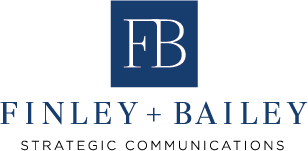The timing couldn’t have been worse.
Two months before the city would commemorate the 10-year anniversary of a historic flood that devastated the Nashville region, a series of tornadoes struck Davidson, Putnam and Wilson Counties in the early hours of March 3. Nashville, it seems, must brace itself for a major natural disaster every decade or so; before the Great Flood of 2010, a tornado swept through downtown and East Nashville.
It was in part why on March 2, just hours before the tornadoes hit, The Community Foundation — on behalf of the VOAD (Voluntary Organizations Assisting in Disaster) — began renewed efforts on disaster preparedness. It was intended to be a spark to fire up a plan for preparedness for a thriving nonprofit community that works in chorus on disaster recovery.
It’s often a long, arduous journey, no matter the disaster.
The trek to recovery isn’t easy, full of many days and nights in unknown circumstances and almost always includes rebuilding homes, emerging legal issues and counseling people through the challenges that hinder a disaster survivor from moving forward.
Recovery is a joint effort, spearheaded by our region’s nonprofits alongside government entities. Through this work, and the large, welcoming hands of organizations, those affected by disaster can attain a new normal.
In the days after March 3, many organizations came forward to help: Hands On Nashville deployed thousands of volunteers; Community Resource Center collected gifts of items, including diapers, wipes and household necessities to help people through their displacement; The Community Foundation deployed its disaster funds so donors could help; newer organizations such as Gideon’s Army and Equity Alliance worked to ensure the residents of North Nashville were cared for and future rebuilding would be done with community input; Project Connect, Salvation Army and Second Harvest fed thousands of people; the Mayor’s Office and the Office of Emergency Management made sure that our community was safe; and the United Way’s 2-1-1 would answer even more calls about where to get help.
This chorus of work is a portrait of immediate disaster response.
But mapping the recovery process is just beginning. Many of those same organizations are now convened as the Long-Term Recovery Group (LTRG), a consortium of government, nonprofit and religious entities. The LTRG continues its dedication to disaster survivors, leading each one of them through their long road to recovery.
There is no template for recovery as each survivor’s situation may be different, and the process may last up to 18 months, and as long as two or three years depending on the size and scope of disaster.
LTRG’s goal is to create a single point of contact through which case managers align the survivor’s need with an organization that is able to help. This work is often focused on a community’s most vulnerable populations — those who don’t have a safety net for recovery.
Part of this effort includes the Tornado Recovery Connection, a hotline (615-270-9255) that helps tornado survivors with unmet, long-term needs, often focusing on rebuilding homes, one of the most expensive parts of recovery.
Disaster work happens on a continuum that begins with preparedness. And through a strong network of organizations that communicate regularly, working collaboratively, rebuilding lives happens with greater efficacy and ultimately, greater results for a disaster survivor.
In retrospect, the timing for preparedness couldn’t have been better.
Rebecca Finley and Greg Bailey

Principals, Finley + Bailey Strategic Communications
*Rebecca and Greg are convening the Long-Term Recovery Group. Rebecca worked for The Community Foundation for 12 years working closely with leadership developing community disaster preparedness, response and communications strategies during the 2010 flood and other disasters.